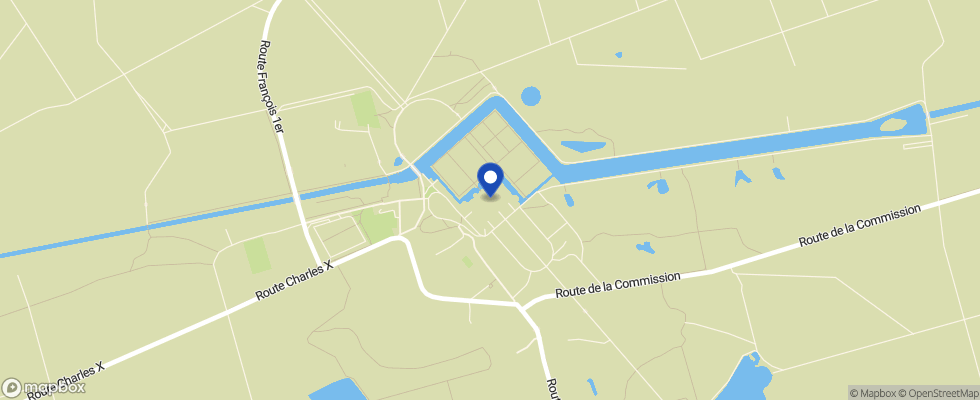The Château de Chambord is a Loire castle in the commune of Chambord located in the Center-Val de Loire region and the Loir-et-Cher department on the Cosson river. The address of the French chateau is simply Chateau, 41250 Chambord, France. It is located 16 kilometers from the Château Royal de Blois and 55 kilometers from Orléans and 178 kilometers from Paris.
Château de Chambord
-
Avoid the queue
-
Instant confirmation
-
Mobile tickets accepted
What to expect
The Château de Chambord... This name alone symbolises the Loire Valley and its splendours. Chambord is without contest the biggest, most cast and the most prestigious in this region.Erected by Francis I at the height of his glory after the victory at Marignan, Chambord is one of the most unique creations that the Renaissance period has left us. The leg of the genius of the Italian Renaissance, Leonardo da Vinci, floats here and there on the castle, and makes him the most probable inspiration for Francis I.
Opening hours
The Chateau de Chambord is open all year round except the 1st January and the 25th December.
- from October 28 to March 29: from 9am to 5pm (Low season)
- from March 30 to October 27: from 9am to 6pm (High season)
Last access 30 minutes before the closing of the castle.
The castle closes at 4pm on 24 and 31 December.
The Castle Park is open every day of the year.
Castle and Gardens Rates
Full price: €14.50 (castle + gardens)
Reduced rate: 12 € (presentation of mandatory proof)
- Visitor who has purchased a "forest or entertainment" service for groups or individuals sold by the Chambord national estate.
- Teacher without an education pass, head of documentation and information centre and head teacher
- Young people aged 18 to 25 (outside the European Union)
- Accompanying the subscription card holder
- Job seeker, RSA or social aid recipient
Free of charge:
- Under 18 years old
- 18-25 year olds from the European Union
- French primary and secondary school teachers (Teacher wuth a stamped national education pass for the current year)
- Holder of the Culture Card issued by the Ministry of Culture
- Person with a disability + 1 companion
Visit of the Castle and Gardens
- Visit the Castle freely and discover the famous double revolution staircase and more than 4,500 works of art in the refurbished apartments.
- A 20-minute film on the history and architecture of Chambord, translated into 4 languages (English, Italian, Spanish, German), is shown continuously in one of the rooms on the ground floor.
- The Jardins à la Française of the Château de Chambord have more than 600 trees, 800 shrubs, 200 roses, 15,250 plants marking the borders, or 18,874 m² of lawn.
History of Château de Chambord
Symbol of royal power
Chambord's architecture is a clever blend of the French medieval era and the Italian Renaissance. Many very audacious innovations at the time were also concentrated in Chambord, such as the symmetry of the buildings, the treatment of openings and corridors and the location of the double-revolution staircase... If the castle is a masterful work that we owe to the initiative of François I, it was under the reign of Louis XIV that the building was completed. The Sun King then saw it as a symbol of royal power and resided there several times with his court. In its vast game forest, large hunting trips take place. It was also during his reign and in this place that Molière presented for the first time two successful plays, "Le Bourgeois Gentilhomme" and "Monsieur de Pourceaugnac".
King Francis' hunting
Unlike other castles such as Cheverny for example, Chambord Castle is only very poorly furnished. And for good reason, it was a temporary residence at a time when the king and his court were travelling around, changing residence with the seasons. And let us not forget that the Château de Chambord was originally designed as a hunting lodge to accommodate François I and his numerous courtyards and not as a real residence (the château nevertheless has no less than… 430 rooms!). What’s more, you can admire in its rooms "La chasse du roi François", a complex woven during the reign of Henri IV in the first quarter of the 17th century, even before the creation of the Manufacture des Gobelins. This work allows you to discover the hunting techniques of the time.
The deer's bellow
Chambord Park is the largest enclosed forest park in Europe, with a total area of 5,440 hectares surrounded by a 32-kilometre wall. Many plant and animal species develop freely: deer, wild boar, roe deer and even Corsican mouflons, not to mention a very rich population of birds with more than 150 species recorded. You can discover this natural reserve in the company of a forest guide, in an all-terrain vehicle. Ponds, meadows, moors... you will discover all the aspects of this immense estate and, by chance, you may come across a deer or stag. Moreover, during the good season, you can join a group for the observation of the deer bellow from a viewpoint.
Group quotation
Are you planning an event for a group of more than 10 people?
Map

41250 Chambord
Customer Reviews
Customers also bought











